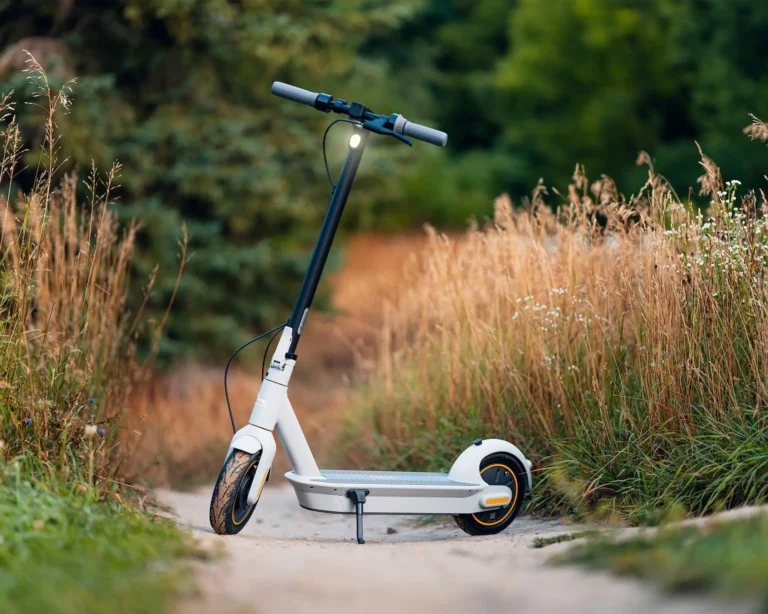10 Useful Tips for Long-Distance Driving


The freedom of traveling on long stretches of road provides a sense of comfort and an excellent experience. However, to ensure the utmost safety and convenience for your journey, here are 10 useful tips for long-distance driving:
- Pre-trip Vehicle Check:
Before embarking on your journey, inspect all crucial elements such as engine oil, coolant, tire pressure, and lighting systems. This helps prevent unexpected issues during the trip.
a. Engine Oil: Before starting your trip, open the hood and pull out the oil dipstick to check the oil level. If necessary, add oil to ensure it falls within the safe range. Sufficient oil contributes to a cool and efficient engine operation.
b. Coolant: Open the coolant reservoir cap and check the coolant level. If it’s low, add coolant or an appropriate coolant mixture. This ensures the cooling system operates efficiently, preventing overheating and engine damage.
c. Tire Pressure: Use a tire pump to check the tire pressure, including the spare tire. Follow the manufacturer’s instructions for pressure and ensure stability. Properly inflated tires enhance fuel efficiency and ensure safe driving.
d. Lighting System: Turn on the vehicle lights and inspect all bulbs, including headlights, taillights, turn signals, and brake lights. Replace any burnt-out bulbs and ensure the lighting system functions fully for improved visibility and recognition in low-light conditions.
e. Brake System: Test the brake system by gently and abruptly pressing the brake pedal. If you hear unusual sounds or feel a soft brake pedal, it indicates the need for brake system inspection. If any issues arise, take your vehicle to a repair shop for evaluation and repair.
f. Repair Tools: Carry a small repair toolkit containing a tire iron, a spare tire, a tire pump, and basic tools. In case of minor issues on the road, you can address them yourself without relying on assistance from others.
Performing these checks ensures your vehicle operates efficiently and safely before embarking on a long journey.
- Scheduled Regular Maintenance:
Adhere to regular maintenance for your vehicle. Proper maintenance will enhance performance and durability.
a. Regular Oil Changes: Establish a regular oil change schedule based on mileage or usage time, depending on the manufacturer’s requirements. Regular oil changes help protect the engine from wear and extend the lifespan of the vehicle. If the weather is cold, you need to pay attention to changing your car’s engine oil for the winter, to ensure your car operates smoothly.
b. Check Cooling System: Regularly inspect and replenish coolant is also crucial to ensure the effective operation of the cooling system. This schedule is often outlined in the vehicle’s user manual.
c. Inspect Brake System: Schedule regular checks of the brake system to ensure that maintenance and replacement of necessary parts are carried out correctly. A robust brake system is key to safety while driving.
d. Replace Air and Oil Filters: A schedule for replacing air and oil filters helps keep the engine air clean and ensures smooth oil circulation without hindrance.
e. Inspect Suspension System: Establish a schedule for inspecting and maintaining the suspension system, including checking and replacing components such as bearings, springs, and shock absorbers. A stable suspension system helps maintain comfort while driving and good control on the road.
f. Check Electrical System: Schedule checks on the electrical system, including testing and replacing the battery if necessary. Properly functioning electrical systems are crucial to avoiding unexpected issues during journeys.
g. Inspect Drivetrain System: For vehicles with a drivetrain system, schedule checks and maintenance for the gearbox, differential, and related components. This helps ensure the performance and longevity of the drivetrain system.
Scheduled regular maintenance not only helps maintain the optimal performance of the vehicle but also prevents unexpected breakdowns and malfunctions. When determining the schedule, refer to the manufacturer’s user manual and seek advice from automotive maintenance experts.
- Emergency Preparedness:
Bring along a small repair kit, auxiliary engine oil, a coolant spray, and a spare tire. This will empower you to handle minor issues on the road independently.
a. Spare Tire: Always carry a fully inflated and secure spare tire, along with a tire-changing toolkit. Regularly check the pressure of the spare tire to ensure it’s ready for use when needed. Learn how to change a tire before your journey to enhance your self-sufficiency skills.
b. Small Repair Kit: Pack a small repair kit comprising tire patches, a coolant spray, a set of nails, and other basic tools. These tools can assist you in resolving minor problems without relying on external help, especially when traversing areas with limited support facilities.
c. Auxiliary Engine Oil: Carry a bottle of auxiliary engine oil, particularly if your vehicle shows signs of oil consumption or if you’re preparing to navigate through challenging road conditions. Auxiliary engine oil can help protect the engine in emergency situations.
d. Coolant Spray: To address low coolant issues or if facing an emergency situation, bring a backup coolant spray. This will help you maintain a safe operating temperature for the engine.
e. Flashlight and Headlamp: In case repairs need to be performed in low-light conditions, bring a flashlight and a headlamp for sufficient illumination. This enhances safety and convenience when working outside the vehicle.
f. Spare Fuel Container or Reserve Gas Can: If planning to travel through areas with limited gas stations, carry a spare fuel container or a reserve gas can. This prevents difficulties in accessing fuel during your journey.
g. Map and Backup GPS: In case of signal loss or malfunctioning navigation devices, carry a map of the geographical area you’ll be passing through and a backup GPS device to help you determine your route.
Preparing these items enhances your self-sufficiency on the road and reduces the risk of encountering unforeseen issues.
- Plan your rest stops
If the journey is lengthy, plan regular rest stops to avoid fatigue and maintain alertness while driving.
a. Identify ideal stopping points: Before embarking on the trip, identify potential stopping points that could be the best choices for resting. This includes areas with motels, hotels, or safe and convenient locations to park and rest.
b. Schedule regular rest breaks: Set a schedule for periodic rest stops, approximately every 2-3 hours of driving. The break time should be sufficient for you to rest, have a light meal, and adjust your mindset before continuing the journey. This helps reduce fatigue and enhances focus while driving.
c. Prepare for overnight stays: If you plan to rest overnight, bring a pre-booked list or use a mobile app to ensure accommodation. Avoid last-minute searches, especially in the evening.
d. Learn about amenities at rest stops: Before choosing a rest stop, familiarize yourself with the amenities and services available, including lodging, restaurants, and convenience stores. This better prepares you for personal needs and essential utilities.
e. Engage in light exercises: During rest stops, perform some light exercises to stimulate basic flexibility and alleviate tension after prolonged periods of sitting. Short walks, basic movements, or light yoga can help improve mood and alertness.
f. Avoid driving when excessively fatigued: If you feel excessively tired or drowsy while driving, stop and rest immediately. Your safety and the safety of others on the road should be the top priority.
g. Establish a comfortable area in the car: If you decide to rest in the car, ensure you’ve prepared a comfortable space with pillows, blankets, and other personal items to create the best possible sleeping conditions.
Planning rest stops can help maintain alertness and safety during long-distance driving.
- Maintain a Safe Speed
Adhering to an effective speed and consistently keeping a safe distance from other vehicles helps reduce the risk of accidents and enhances driving comfort.
a. Adhere to Speed Limits: Always adhere to the speed limits indicated on road signs. Maintaining a safe speed helps reduce the risk of accidents and increases reaction time in emergency situations.
b. Utilize Cruise Control System: When road conditions permit, use the cruise control function to maintain a stable speed. This not only helps alleviate fatigue but also contributes to fuel efficiency.
c. Adapt to Weather Conditions: Maintaining a safe speed includes adjusting your speed when the road is wet, slippery, or when weather conditions are challenging. Pay attention to traffic announcements and adapt your speed to road conditions.
d. Keep a Safe Following Distance: Always maintain a safe following distance from the vehicle in front, at least 2 seconds in normal conditions, and increase it if road conditions are poor. This provides enough time to react and avoid potentially hazardous situations.
e. Avoid Chasing Green Lights: Maintaining a safe speed often involves avoiding chasing green lights to ensure you have adequate time to react appropriately when it’s necessary to stop. This also reduces the risk of colliding with other vehicles crossing the intersection.
f. Set Speed Limiters on Your Vehicle: If your vehicle has a speed limiting function, use it to ensure you do not exceed the safe speed limit. This is particularly useful when driving on long stretches of road.
g. Listen to Personal Feelings: Pay attention to your personal feelings and health. If you feel tired, reduce your speed or take a break. Both the physical and mental well-being of the driver significantly impact the ability to drive safely.
Maintaining a safe speed not only keeps you and others safe on the road but also helps reduce fatigue and enhances the overall comfort of the driving experience.
Contents
6. Use the Safe Entertainment System
If available, utilize the vehicle’s entertainment system to maintain a relaxed mindset and enhance focus while driving.
a. Pre-trip Check and Update: Before embarking on your journey, ensure that your entertainment system undergoes a thorough check and update. This includes updating maps, checking Bluetooth functionality, and ensuring that safety-related features like voice control are operating correctly.
b. Use the Integrated In-car Entertainment System: If your vehicle has an integrated entertainment system, take advantage of it to stay alert and reduce stress while driving. Listening to soft music, news, or audiobooks can help maintain a positive mood and alleviate fatigue.
c. Restrict Device Use While Driving: Avoid using mobile phones or other entertainment devices while driving. If necessary, use voice control features or wearable devices to keep your hands on the steering wheel and focus on the road.
d. Create a Safe Playlist: Before your trip, create a playlist containing relaxing songs or music to help maintain a positive mood and reduce stress. Avoid overly energetic songs that may cause distraction or loss of concentration.
e. Listen to Traffic Updates: Use traffic information apps or in-car news update features to monitor road conditions. This information helps you adjust your route in case of traffic issues.
f. Only Use the System When Stationary: If you need to adjust settings or modes on the entertainment system, do so when the vehicle is stationary. This practice helps maintain safety and avoids distracting the driver.
g. Use Wireless Headphones When Necessary: If you want to listen to personal music or make phone calls while driving, use wireless headphones to maintain hand freedom and keep your mind focused on the road.
Utilizing a safe entertainment system can make your journey more enjoyable, but always ensure that their usage does not compromise your ability to drive safely.
7. Avoid Driving While Fatigued
If you feel tired, take a break or let someone else take over the driving. Driving while fatigued increases the risk of accidents.
a. Recognize Signs of Fatigue: Learn to identify signs of fatigue such as tired eyes, loss of focus, feeling drowsy, and even red or uncomfortable eyes. If you feel fatigued, find a safe place to pull over and rest.
b. Plan for Regular Rest Stops: Before starting your journey, plan for regular rest stops. Taking a break every 2-3 hours helps rejuvenate energy and enhances alertness while driving.
c. Share Driving Responsibilities: If possible, have at least one companion so you can take turns driving and resting. If driving alone, find a safe place to stop and rest.
d. Stay Hydrated and Eat Light: Keep your body awake by drinking cold water and eating light snacks. Avoid heavy meals and caffeinated drinks to maintain mental alertness.
e. Open Windows or Turn on the AC: Keep the air inside the car fresh and cool. Opening windows or turning on the air conditioning can help stay alert and focused.
f. Get Adequate Sleep Before the Trip: Avoid starting your journey without sufficient sleep. If you’re departing in the evening, make sure you’ve had enough sleep beforehand.
g. Use Safe Driving Techniques: When fatigued, pay attention to using safe driving techniques such as maintaining a steady speed, keeping a safe following distance, and avoiding excessive speed.
h. Stop Immediately If Feeling Fatigued: If you feel tired, find a place to pull over immediately. Driving while fatigued poses a significant risk of traffic accidents, jeopardizing your safety and that of others.
i. Prioritize Health Care: Maintain a healthy lifestyle and overall well-being to reduce the risk of fatigue while driving.
Avoiding driving while fatigued is crucial for ensuring safety and preventing unwanted accidents on the road.
8. Take advantage of traffic information apps
Use traffic information apps to update road conditions and avoid traffic jams.
a. Install and update apps before your trip: Before starting your journey, install and update traffic information apps such as Google Maps, Waze, or similar applications. Ensure you have the latest version for the most extensive and accurate road information.
b. Check online traffic conditions: Utilize the online traffic condition check feature on apps to learn about congestions, road construction, or other incidents on your route. This information helps you adjust your route and avoid congested areas.
c. Receive alerts and automatic notifications: Traffic information apps often provide alerts and automatic notifications about road conditions. Take advantage of this feature to receive the latest information and avoid issues on the road.
d. Optimal route suggestions: Traffic information apps can suggest optimal routes based on current traffic conditions. Monitor and use the proposed routes to reduce travel time and avoid congested areas.
e. Integrate voice navigation: Use the voice navigation feature on apps to avoid looking at the screen while driving. Listening to voice instructions helps maintain focus on the road and enhances safety.
f. Update information about rest stops and services: If you are looking for rest stops, hotels, or other services, use the app to update information and reviews from other users.
g. Share traffic information: If you encounter emergency traffic situations or road incidents, use the information sharing feature on apps to alert other drivers.
h. Integrate navigation and search for stops in your vehicle: If your vehicle has integrated traffic information features, use them to search for rest stops, restaurants, or service points without leaving the in-car entertainment system.
Taking advantage of traffic information apps not only improves your navigation but also reduces stress and travel time on the road.
9. Ensure Passenger Safety
If you have passengers, make sure they have correctly fastened their seatbelts and provide all the amenities to keep them comfortable throughout the journey.
a. Check Safety Equipment Before Departure: Before each trip, ensure to inspect the safety equipment in the vehicle such as seatbelts, airbags, and brake systems. Make sure everything is functioning properly to ensure safety for you and your passengers.
b. Instruct Passengers on Safety: Before commencing the journey, provide a brief safety instruction for passengers. This may include how to use seatbelts, the location of airbag deployment, and the procedure for opening emergency exits.
c. Provide Comfort for Passengers: Ensure passengers are comfortable by checking the heating, cooling, and ventilation systems in the vehicle. If the trip is long, have enough water and light snacks for the passengers.
d. Pay Attention to Driving Behavior: Drive calmly and avoid abrupt maneuvers. This not only creates a comfortable driving experience but also keeps passengers safe inside the vehicle.
e. Organize Safety Tools for Children: If there are children onboard, ensure that you have safety tools such as child seats appropriate for their weight and height. Install them correctly to ensure the child’s safety throughout the journey.
f. Limit Phone Usage While Driving: Avoid using a mobile phone while driving, especially when there are passengers. If necessary, use hands-free mode to maintain focus.
g. Keep the Vehicle Clean: A clean vehicle not only leaves a positive impression on passengers but also enhances safety by reducing the risk of accidents caused by distractions from trash or improperly placed items.
h. Address Safety Issues Immediately: If any safety issues arise during the journey, address them immediately. Safely stop the vehicle and take emergency measures to protect both the driver and passengers.
i. Maintain Contact Information: Always keep contact information available so you can communicate with passengers or local authorities when needed.
Follow these guidelines to ensure that your passengers have a safe and comfortable experience while traveling.
10. Stay Connected
Always keep in touch by carrying a mobile phone or a two-way radio to communicate with family or friends in emergency situations.
a. Carry a mobile phone and a power bank: Always have your mobile phone and a power bank with you to stay connected in any situation. Ensure that your phone is fully charged before starting your journey.
b. Use wireless earphones while driving: If necessary to make phone calls while driving, use wireless earphones to keep your hands on the steering wheel and focus on the road.
c. Utilize safe driving modes for calls: If your car has safe driving modes, use them to reduce distractions during calls. It helps keep your hands on the steering wheel and eyes on the road.
d. Use voice messaging apps: When sending messages, use voice messaging apps to talk without looking at the phone. This helps maintain focus on driving.
e. Plan calls or messages during red lights or while parked: If there’s an important call or message to send, plan to do it when you’re at a red light or have parked. This helps ensure safety and avoids hazards on the road.
f. Provide advance notice of incidents: In case of road incidents or disruptions, immediately inform passengers and provide information about the situation. This helps maintain transparency and builds trust with passengers.
g. Store important phone numbers: Save important phone numbers such as rest stops, emergency centers, and emergency contacts in your phone’s contacts for quick access when needed.
h. Check the road before making calls or sending messages: Before making calls or sending messages, ensure that you are in a safe area that poses no danger to you and those around you.
i. Always listen and interact safely: During calls, listen and interact safely. If the conversation requires high concentration, request to call back after you have stopped the vehicle.
Staying connected is not only an essential factor for maintaining safety but also helps create a convenient and comfortable driving experience for both you and your passengers.
The last but not least, If you need to rest at a motel or spend the night somewhere, you should use a car cover to protect your car after a long journey.





